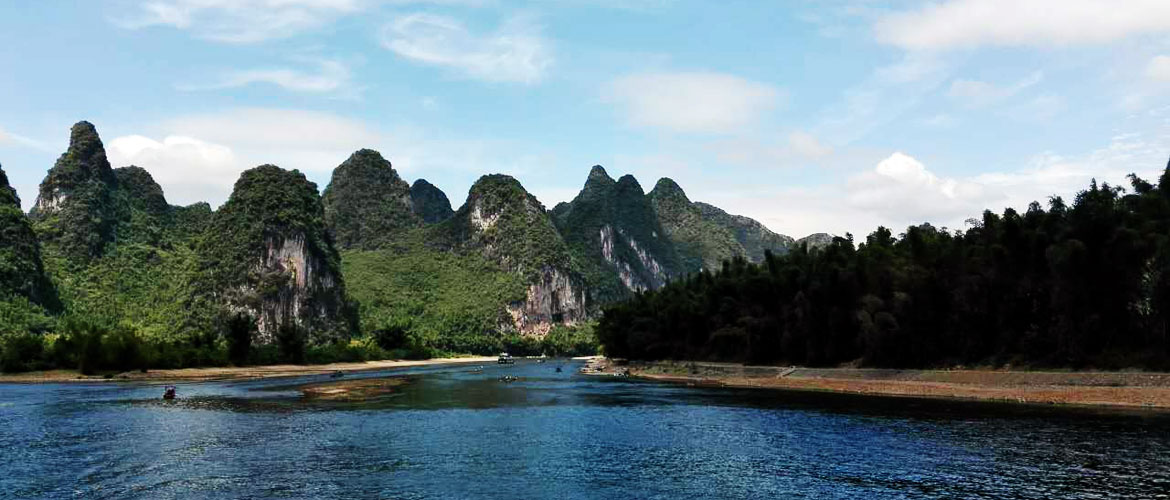Are you looking for China tours by high-speed train? If so, you’ve just found the right China tour operator in Laurus Travel!
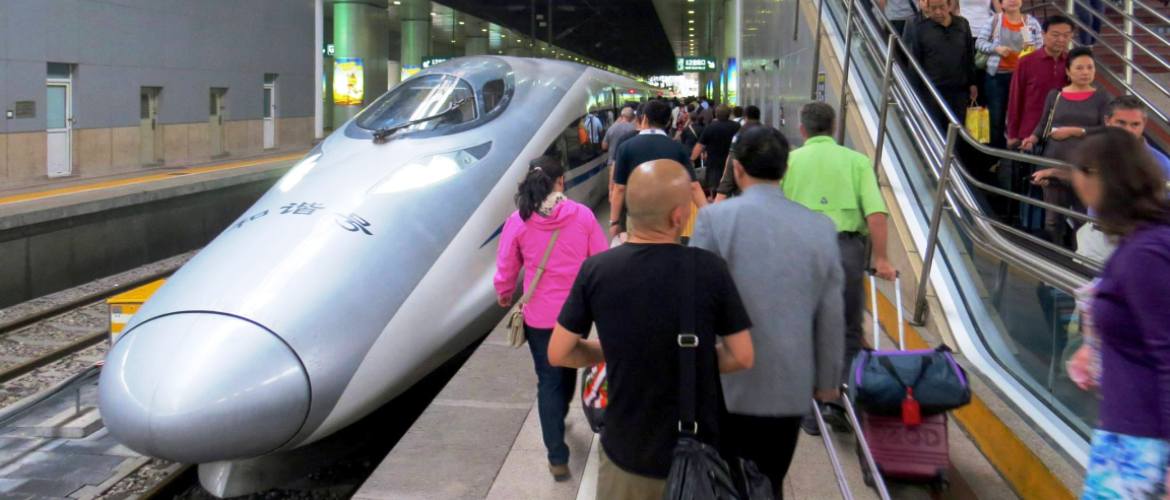
China’s first high-speed railway (between Shanghai and Beijing) opened in June 2011. Today, the total length of China’s high speed rail network has reached 42,000 km, which is more than the rest of the world’s high-speed rail tracks combined.
In the past 15 years, Laurus Travel has been leading the charge in developing luxury China tours by high-speed train. No wonder that today Laurus Travel is the most China tour operator specializing high-speed rail travel.
China’s high-speed rail network has transformed the way visitors explore the country, making it easier and more comfortable than ever to see the diverse landscapes and vibrant cities of China. If you plan to visit China, you must make the best use of China’s high-speed railway system to save money, time and the environment.
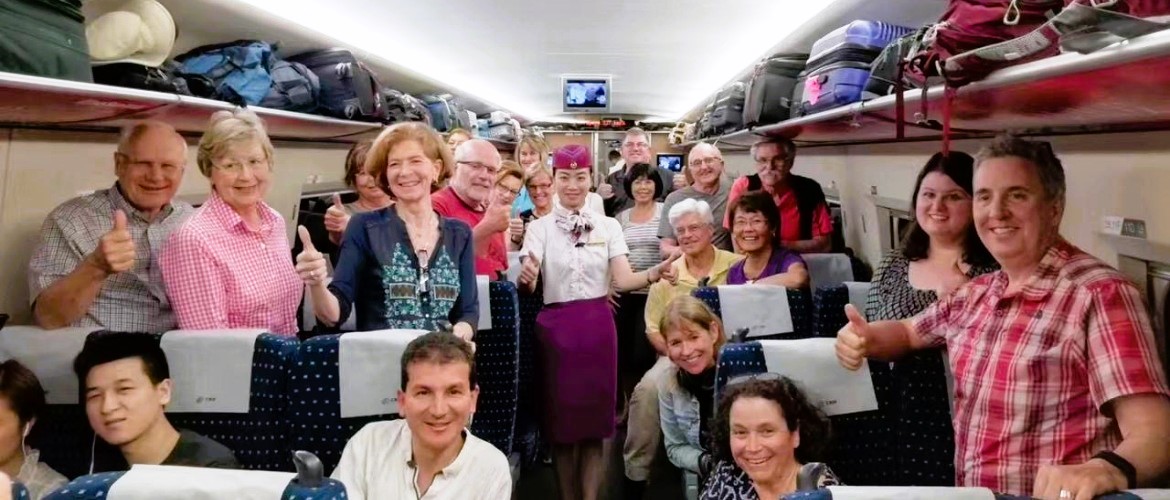
China Tours by High Speed Train – Recommended Itinerary
We have many China tour itineraries featuring high speed train. The 25-day Classic China by High Speed Train has been among the most popular several years in row.
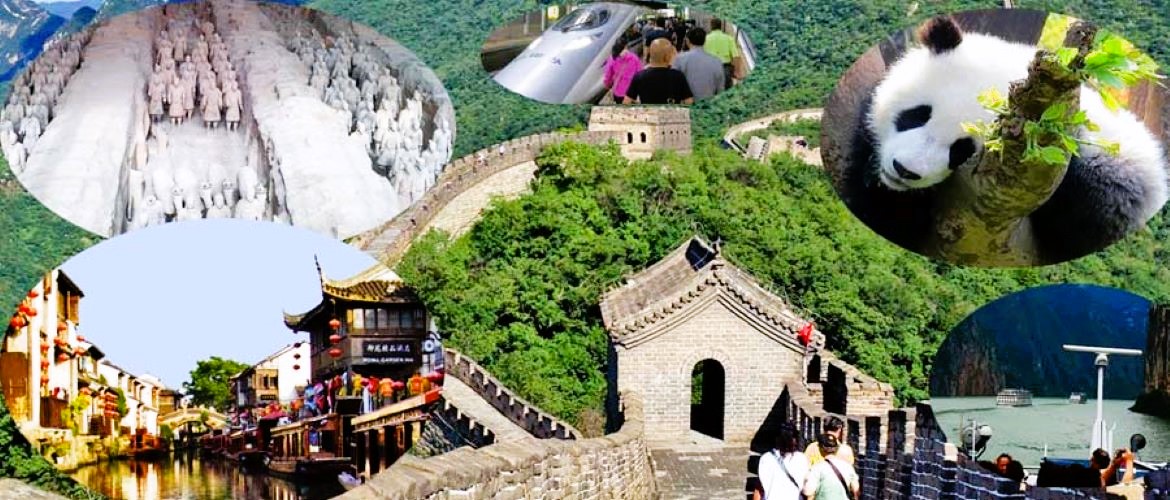
Classic China by Train (25 days)
Shanghai – Suzhou – Tongli – Qufu – Beijing – Xi’an – Chengdu – Chongqing – Yangtze Cruise – Yichang – Wuhan – Guilin – Hong Kong
Embark on this luxury tour of China by train through the heart of China, where ancient traditions harmonize with cutting-edge modernity, and each city tells a tale woven into the fabric of a nation steeped in history. This leisurely placed grand tour of China is a captivating journey that transcends time, offering an immersive experience that showcases the best of China’s cultural heritage, breathtaking landscapes, and dynamic urban centers.
On this fully guided Luxury Tour of China by Train, you’ll travel between the cities exclusively by high-speed train, thus eliminating air travel-related hassles. Travelling by train also allows you to see the countryside and mingle with locals.
Important Features
- Small group size – average 15, maximum 20
- Expert guides handpicked by company owners
- Inter-city travel exclusively by high-speed train
- No annoying forced shopping stops
- Quality meals at non-tourist restaurants
- Unlimited supply of bottled water during group activities
- Outside cabin on or above bridge deck for Yangtze cruise
- Complimentary Wi-Fi on cruise ship and in all hotels
- Visit to chambers in Forbidden City that most tour operators leave out
- Great Wall visit at Mutianyu including cable car rides
- Day hike at Longji terraced rice fields
Options Available
- Peking Opera show with dinner in Beijing
- Tang Dynasty cultural show with dinner in Xi’an
- Traditional face mask changing performance with dinner in Chengdu
- Half-day immersive tea farm visit in Guilin
Meal Code: B = breakfast / L = lunch / D = dinner
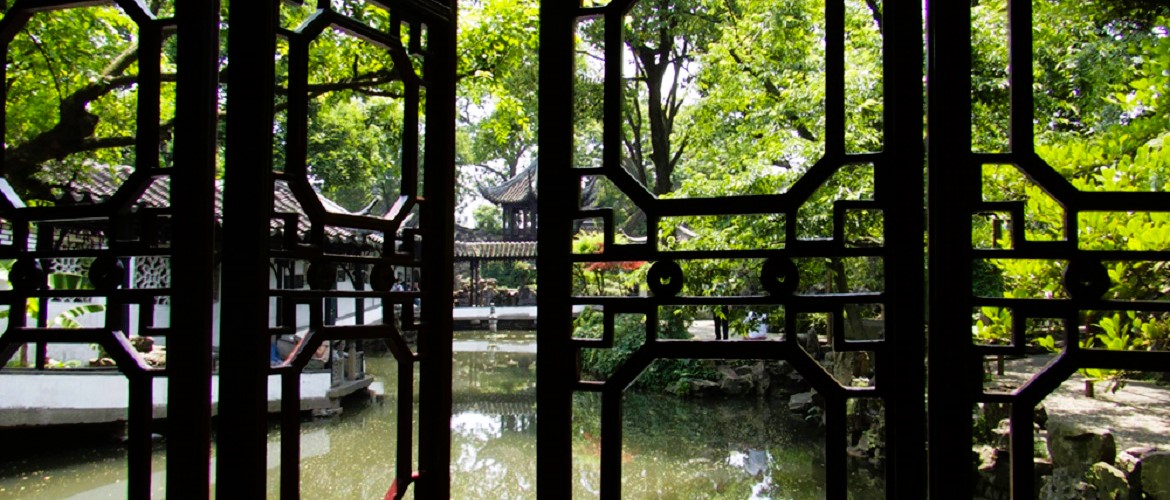
Day 1/Thu: Departing for Shanghai
Depart from a city of your choice and lose a day upon crossing the International Date Line.
Day 2/Fri: Arrival in Shanghai
Meet the driver on arrival for transfer to the hotel. You’ll have the balance of the day at leisure. The guide will get in touch with you tonight.
Day 3/Sat: Shanghai (B/L/D)
With a population of 24.9 million (2021), Shanghai is China’s biggest city, which delights the visitor with its futuristic skyline and historical landmarks.
Following the tour orientation we visit Jade Buddha Temple located in an old neighbourhood, the famous waterfront promenade known as the Bund, and the Yu Garden in the old town centre. We wrap up the day with a drive through the glitzy financial district of Lujiazui on the opposite side of the Bund across Huangpu River.
Day 4/Sun: Shanghai (B)
Free day to explore on your own. We recommend Shanghai Museum and the Urban Planning Exhibition Center nearby. Shanghai Museum is frequently cited by visitors as one of the best of its kind in China, it is also a great place to explore on your own.
Day 5/Mon: Shanghai – Suzhou (B/L)
After a leisurely breakfast we drive 85 km to Suzhou. Ancient Suzhou is most famous for its gardens, canals and silk industry. In the late 13th century a Venetian named Marco Polo visited Suzhou and was very impressed by what he saw. He vividly described the prosperous silk industry and dubbed Suzhou “Venice of the East” due to the small waterways crisscrossing the city.
Our full-day schedule takes in historic Tiger Hill, Humble Administrator’s Garden, Suzhou Museum (designed by I. M. Pei), North Pagoda and a short canal cruise. Those interested in shopping can ask to be dropped off at the Silk Embroidery Research Institute or a filature (silk reeling mill) on the way back to the hotel.
Day 6/Tue: Suzhou – Tongli – Suzhou (B/L)
We set off for Tongli following breakfast. Located 25 km south of Suzhou, ancient Tongli is renowned for its canal system intersecting the town. After lunch we return to Suzhou and have the remainder of the day at leisure.
Day 7/Wed: Suzhou – Qufu (B/L/D)
This morning we board the bullet train for Qufu (3 ½ hours). Qufu is the hometown of Confucius (551-479 BCE), who lived around the same time as Siddhartha Gautama (the Buddha) and Cyrus the Great of Persia. His teachings collectively known as Confucianism have played and continue to play a vital role in the evolution of Chinese civilization.
In the afternoon we tour the massive Confucius Temple which features a series of impressive gateways, clusters of twisted pines and cypresses, inscribed steles and tortoise tablets recording ancient events.
Day 8/Thu: Qufu (B/L)
We begin our sightseeing this morning at the mansion once inhabited by the descendants of Confucius. We then proceed to Confucius Forest – the last resting place of Confucius and a cemetery for his descendants. The cemetery, the residence and the temple together form the UNESCO designated World Heritage Site in Qufu. If time allows, we will visit a village nearby.
Day 9/Fri: Qufu – Beijing (B/L)
We spend the morning exploring the small town on our own. After lunch we ride the bullet train to Beijing (80 minutes) and transfer to the hotel on arrival.
The capital of China, Beijing is a world-class cultural and educational centre with a population of 21.9 million (2020), ranking it China’s second biggest city behind Shanghai. Beijing is renowned for its opulent palaces, temples, and huge stone walls and gates – treasures that make it the most popular tourist city in China by the number of visitors it receives every year.
Beijing was already a strategically important city in northern China for centuries when Kublai Khan (1215-1294) decided to move his capital here from Karakorum in Mongolia. With the collapse of the vast Mongol empire in 1368, Beijing, known as Da Du or Grand Capital at the time, lost its status as the country’s capital but regained it in 1420 when the imperial court of the successive Ming Dynasty moved here from Nanjing. Beijing continued to serve as China’s capital after Manchu tribes dethroned the last emperor of the Ming Dynasty in 1644 and established the Great Qing Empire (Qing Dynasty), which lasted until 1912.
Afternoon sightseeing in Beijing takes in Lama Temple and Guozijian (imperial academy). Lama Temple, commonly known as Yonghe Temple among locals, was built in 1694 as residence of Prince Yong (Yinzhen), one of the sons of Emperor Kangxi. After Prince Yong ascended the throne as Emperor Yongzheng in 1722, half of his former residence was turned into a lamasery – a monastery for monks of Tibetan Buddhism. Guozijian was the highest institute of learning in China’s traditional educational system during the Yuan, Ming and Qing dynasties. One of its main functions was assisting the imperial court in administering national examinations.
Day 10/Sat: Beijing (B/L/D)
We begin our sightseeing today at the Forbidden City. Officially known as the Palace Museum, the Forbidden City was the place where the emperors of the Ming (1368-1644) and Qing (1644-1912) dynasties lived and carried out their administration. Construction of the Forbidden City took 14 years (1406-1420) to complete. The complex consists of 980 buildings and covers 72 hectares or 180 acres. It exemplifies traditional Chinese palatial architecture and has influenced cultural and architectural developments in East Asia and elsewhere.
Tian’anmen Square comes next. Located in the heart of Beijing, the square measures 880 metres from north to south and 500 meters from east to west. Said to be the largest public plaza in the world, Tian’anmen Square has the capacity to hold one million people. The imposing Tian’anmen Tower sits at the north end of the square while the Monument to the People’s Heroes dominates the centre. The square is flanked by The Great Hall of the People (west) and the National Museum (east). Chairman Mao’s Mausoleum and Qianmen (Front Gate) are located in the south of the square.
Afternoon sightseeing takes place at the Temple of Heaven. Situated in southeastern Beijing, the Temple of Heaven is China’s largest extant sacrificial temple where, during the Ming and Qing Dynasties, the emperors conducted the elaborate and most exalted sacrifices addressed to “the Supreme Ruler of the Universe.” Construction of the temple started in 1406, during the reign of the Ming Emperor Yongle, and took 14 years to complete. The temple was expanded under the Qing emperors Qianlong (1736-1796) and Jiaqing (1796-1820). Occupying 2.73 square kilometres (roughly 1,700 by 1,600 metres), the area of the Temple of Heaven is more than twice that of the Forbidden City.
The famous Hongqiao Pearl Market, the largest pearl market in the world, is right across the street from the Temple of Heaven. Recommended by numerous guidebooks for freshwater pearls, Hongqiao teems with domestic and international shoppers. If you are interested, please ask the guide to drop you off there. However, you’ll need to get back to the hotel by taxi, which costs less than 10 US dollars.
Today we enjoy a delicious dinner at a popular Peking Roast Duck restaurant. Peking Roast Duck is a famous Beijing dish prized for the thin and crispy skin with authentic versions serving mostly the skin and little meat, sliced in front of the diners. The meat is wrapped in a thin layer of pancake (Chinese tortilla) together with shredded scallion, cucumber, and a sweet and salty sauce made of wheat flour. Condiments may also include pickled garlic and white sugar.
Day 11/Sun: Beijing (B/L)
After an early breakfast we embark on a full-day excursion to the legendary Great Wall at Mutianyu, 75 km northeast of the city.
Zigzagging over 6,000 kilometres from east to west along undulating mountains, the Great Wall was built to hold off tribal invaders from the north. As history shows, the Wall failed the Chinese rulers miserably, especially in the case of Kublai Khan whose cavalrymen swept across China from the Mongolian steppe, thus the beginning of the Yuan Dynasty (1279-1368).
Construction of the earliest sections of the Wall started in the 7th century BCE. A major renovation started with the founding of the Ming Dynasty in 1368 and took 200 years to complete. The wall we see today in Beijing is almost exactly the result of this effort.
Day 12/Mon: Beijing – Xi’an (B/L/D)
We begin our sightseeing today with a visit to a traditional hutong neighbourhood. Hutong refers to an ancient alleyway with siheyuan or ”4-sided courtyard house” on both sides. The name hutong dates back to the Yuan Dynasty (1279 – 1368 CE). According to some experts, the word originated from the Mongolian language, in which it is pronounced as hottog and means “well.” In ancient times, people tended to gather and live around wells. Therefore, the original meaning of hutong should be “a place where people live around”.
Next on our schedule is the Summer Palace, a well preserved UNESCO World Cultural Heritage Site. The imperial resort was first named Garden of Clear Ripples, which was burnt down by the allied forces of Great Britain and France in 1860 at the end of the Second Opium War (often referred to as the Arrow War by the British). Reconstruction started 25 years later and was completed in 1895 when the name was changed to Yi He Yuan (Garden of Good Health and Harmony). The design gives prominence to Longevity Hill, as well as Kunming Lake south of the hill. The sprawling complex covers an area of 290 hectares and the buildings inside consist of over 3,000 bays.
We travel to Xian by high-speed train (#G87, 14:00/18:23). The 4-hour-23-minute rail journey through fertile farmland dotted with villages provides the visitor with an excellent way to enjoy the beautiful countryside. The track we travel on between Beijing and Zhengzhou is part of the new 2,298 km high-speed railway linking Beijing and subtropical Guangzhou and is also the longest high-speed rail line in the world. In the past 20 years China has been on a building spree expanding the country’s rail network and upgrading existing railways. Its high-speed rail service rivals France’s TGV and Japan’s “shinkansen” in terms of safety, speed, comfort and punctuality.
Day 13/Tue: Xi’an (B/L)
With a history going back over 3,000 years, Xi’an served as China’s capital of several ruling dynasties including the Han (206 BCE – 220 CE) and the Tang (618 – 907). It is home to the famous Terracotta Army and the eastern terminus of the ancient Silk Road – a network of trade routes connecting China proper with regions as far as the Mediterranean beginning in the second century BCE.
We spend the morning visiting the Terracotta Army. Built on the excavation site, the museum is located 30 km east of the city. Designed to follow the first emperor of the Qin Dynasty (221-206 BCE) into eternity, the Terracotta Army represents one of the greatest archeological discoveries of the 20th Century.
After lunch we return to the city for a stroll on the ancient city wall. Declared a national treasure by the State Council in 1961, the wall (first built in 1370) encircles an area of 14 square kilometres. It runs 13.7 kilometres long and measures 12 metres in height with a thickness at the base between 15 to 18 metres.
[ read more ]
